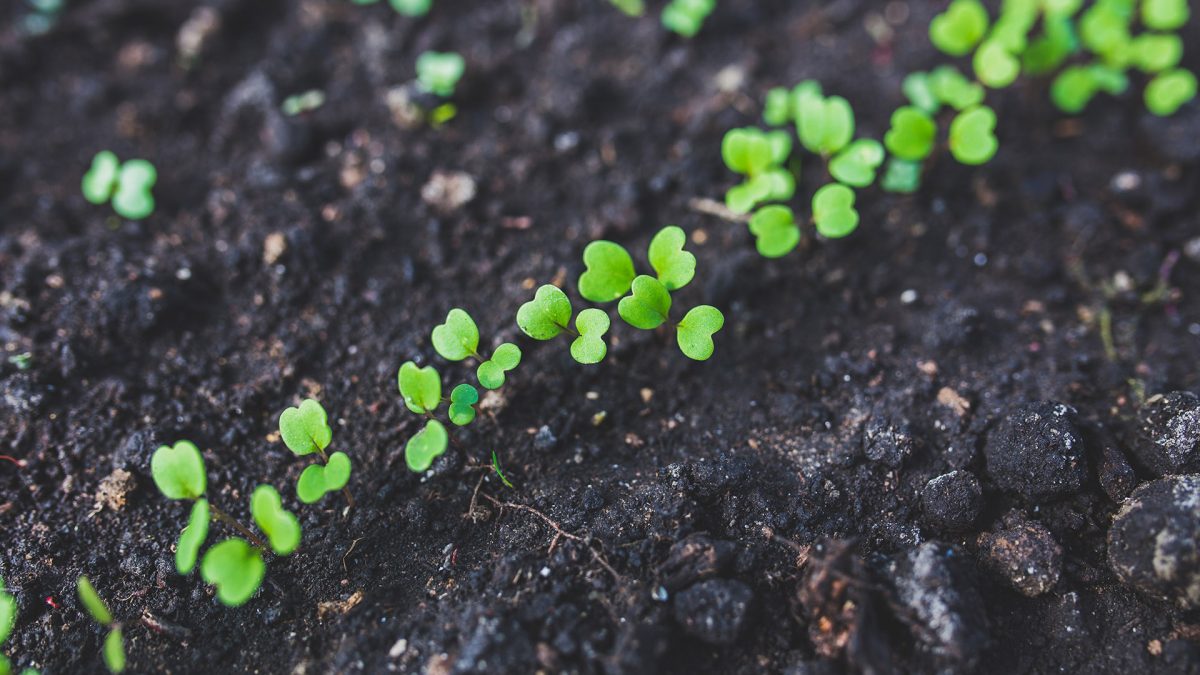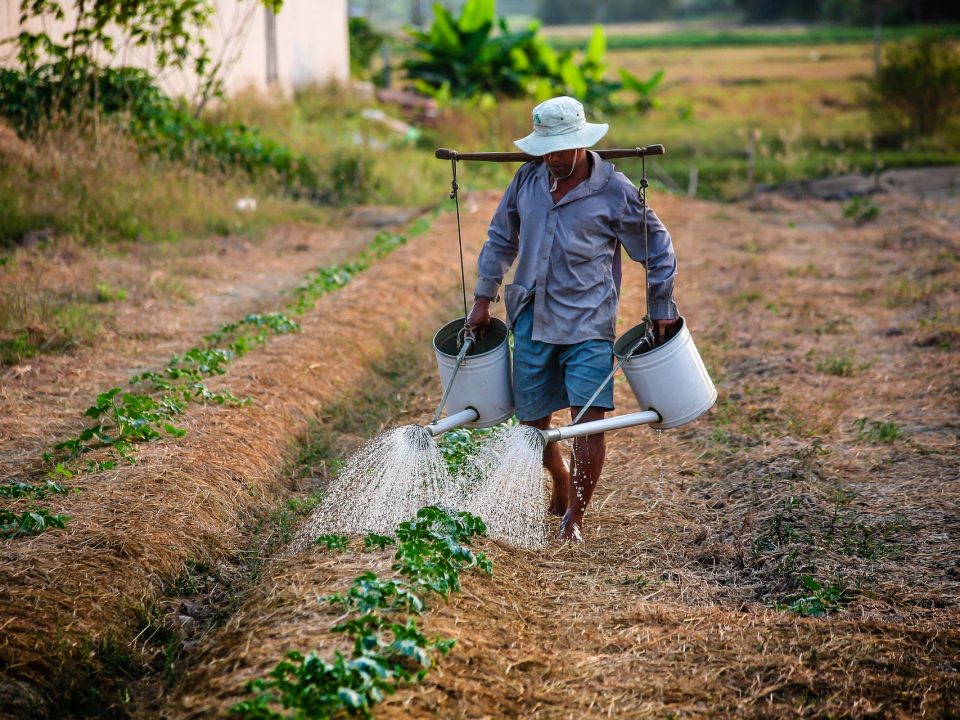Homemade compost – anyone can

Planting herbs in tanks and planters
May 15, 2018
Sexual reproduction in plants
May 28, 2018Homemade compost – anyone can
Self-production of domestic compost contributes to reducing emissions of carbon compounds into the air and reduces the amount of household waste transferred to landfills. This is an uncomplicated operation that everyone can easily carry out in his yard.
The Water Regulations require the gardeners to reorganize. They can be viewed as a threat but can also be seen as an opportunity for improvement and progress.
The need to save water requires us all to rethink the planning and maintenance of gardens. The variety of solutions is wide, and one of them is the increased use of compost, which can save water due to improved soil structure and increased water holding in it, while contributing to increasing plant growth rate and maintaining their health.
The production of home compost can provide a significant portion of the compost needed for the garden, making a significant contribution to reducing emissions of carbon compounds into the air, reducing the amount of waste transferred to landfills and reducing waste hazards. This is an uncomplicated operation that everyone can easily carry out in his yard.
Today, the percentage of private home owners who make compost themselves is quite low.
Background In order for them to perform photosynthesis and produce their food, plants need carbon dioxide (which they receive from the air), sunlight and water. Plants also receive some of the raw materials (minerals) that will be used to grow from the ground.
In nature, the source of minerals in the soil are organic substances, breakdown products of dead plants and animals or animal secretions. The reservoir of soil mineral elements remains almost constant and the fertility level of the soil is not impaired.
In processed soil, however, the mineral elements absorbed by the plants are not returned to the soil. Collecting the crop prevents the elements from being returned to the soil, and with time the soil becomes less fertile. In the landscape garden, where the cuttings and the dead plants are removed, the elements are not returned to the soil, so it is customary to fertilize agricultural land and ornamental gardens.
We can help the natural process of decomposition and decomposition of plants if we return to the ground all the organic residues from the kitchen or the cuttings from our garden, in the form of compost. When organic materials are used for landfilling, as is customary in most places in the country, it is possible that they will mix with toxic substances and will not be available as fertilizer.
In many cases, they do not rot (until after a very long period of time), since the garbage pile lacks oxygen to help the process of decomposition. It can be said, therefore, that for a long time these organic substances “got out of circulation” and are a wasted resource altogether.
The product of decomposition of organic matter under conditions without oxygen is methane (CH4) – a greenhouse gas that increases the greenhouse effect and contributes to global warming. The contribution of methane to global warming is significant and reducing its emission from landfills is part of the global effort to reduce greenhouse gas emissions.
Therefore, from an environmental point of view it is very important to separate organic materials and produce compost. Habitat The process of decomposition in the compost pile takes place with the help of many animals. The compost pile is actually a habitat where representatives of the whole food chain are present. The breakdown of the organic residues is mostly done by microorganisms: bacteria, monoliths and fungi.
Proper microorganisms require three conditions:
Foodstuffs: Microorganisms, like the superior animals, need a food source to produce energy. The source of the food for the compost active microorganisms is the various organic substances.
Oxygen: oxidation of organic matter requires oxygen. Composting is an aerobic process that requires the presence of air and oxygen.
Water: The groups of microorganisms that are active in the process are the bacteria, whose activity is carried out in a water environment only. Therefore, the composted embryo material must be wet enough to allow the activity of the bacteria. Organic matter is a general name for a vast group of compounds with an infinite variety of properties.
The main source of organic materials is living organisms, hence the origin of the name. However, as a general definition, it is possible to determine that the organic materials are composed of four elements: carbon (C). Nitrogen (N), oxygen (0) and hydrogen (H). In the process of composting the organic materials are broken down into their constituents, which are again available to the plants for a new growth cycle.
The compost into the garden When we transfer all the organic material to the compost pile, not only do we reduce the volume of garbage and save the volume of transport in garbage cars, but also give gifts to the land and plants. Anyone who passes the compost he has prepared for potted plants or the vegetable garden will find that his plants are developing better and faster.
The compost we add to the soil enriches it with minerals, nourishes the soil, improves drainage and prevents erosion. And if that is not enough, it improves the rate at which minerals reach the roots by the action of the bacteria in a slow, natural process that occurs throughout the growth season.
Compost Preparation – It’s not that simple if you’re convinced that Compost is right and cost-effective, so what prevented you from entering the compost industry?
It is commonly believed that the process of compost production requires great effort, involves environmental hazards, and is doomed to fail. I would like to contradict this opinion and give you a few basic tips that will help you get through the initial barrier and join the group of compost manufacturers who are addicted to the simplicity and beauty of this endeavor.
Here are detailed instructions and if you are sure about them, success is guaranteed
1. Choosing a place in the garden: Locate a place in your garden, preferably on the edge of the garden in a shady place. The shade will prevent dehydration of the compost. It is important for the compost container to have direct contact with the soil so that the variety of the fertilizers will easily enter the pile. It is best to keep the composters away from home developers, but place them in an accessible place that you can easily reach each time you pour out your kitchen waste.
2. Compost container: Get a large container of plastic material and puncture a few holes, especially in the lower part. The holes are important for ventilation in order to penetrate the oxygen needed for the decomposition process. Composters can also be purchased from different manufacturers of different sizes.
In many local authorities, you can purchase a Compostar at a subsidized price. The commercial composters have ventilation vents, and a door at the bottom that allows the compost to be released. Compost can also be produced in an open pile.






